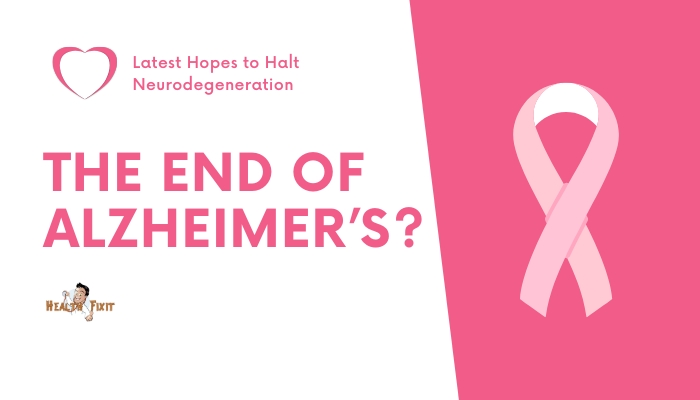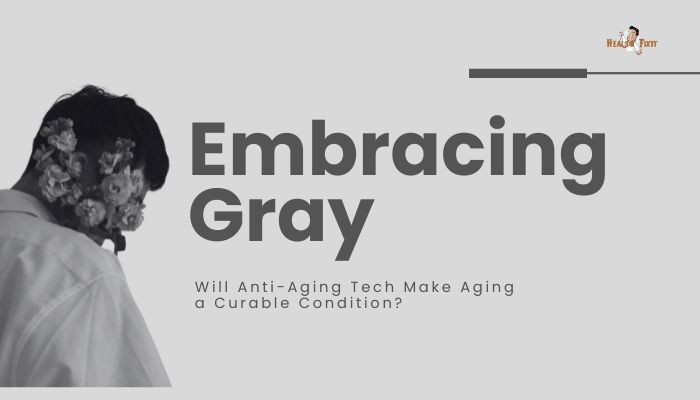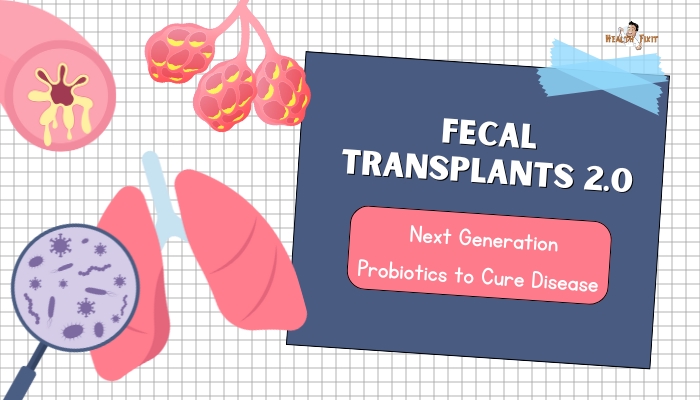Introduction
Alzheimer’s disease—a progressive neurodegenerative disorder that impairs memory and cognition—affects millions worldwide,
placing a heavy emotional and financial toll on families and healthcare systems. For years, the search for effective treatments to reverse or even halt Alzheimer’s has been frustratingly slow, with many candidate drugs failing in clinical trials.
Yet recent breakthroughs—ranging from targeted antibodies to lifestyle-based prevention—kindle renewed optimism.
Could we be on the verge of significant progress, or even a future “end” to Alzheimer’s? This article explores the latest research on disease-modifying therapies, early detection advances, and holistic approaches offering new hope to patients and caregivers.
Understanding Alzheimer’s Disease
Key Pathological Hallmarks
- Beta-Amyloid Plaques: Abnormal protein clumps outside neurons.
- Tau Tangles: Hyperphosphorylated tau protein building up inside neurons.
- Neuronal Death: Progressive loss of neurons and synapses, leading to memory loss, confusion, and other cognitive deficits.
Current Drug Landscape
Existing FDA-approved Alzheimer’s medications (like donepezil, memantine) mainly alleviate symptoms by modulating neurotransmitters.
They do not stop or significantly slow the underlying neurodegeneration. Consequently, the real quest is for disease-modifying therapies that prevent or clear these pathological changes.
New Approaches to Halt Alzheimer’s
Amyloid-Targeting Therapies
After many disappointments, recent drugs that selectively bind and remove beta-amyloid have revived hopes:
- Monoclonal Antibodies: Agents like aducanumab and lecanemab. Clinical trials found these antibodies could reduce amyloid burden in the brain, albeit with debate over clinical significance and side effects like ARIA (amyloid-related imaging abnormalities).
- BACE Inhibitors: BACE (β-secretase) is an enzyme crucial to amyloid production. Although many BACE inhibitors have failed or faced severe side effects, some next-generation variants strive for safer partial inhibition.
Tau-Focused Drugs
With tau tangles strongly correlated to disease progression, tau-lowering strategies have gained traction:
- Anti-Tau Antibodies: Attempt to block abnormal tau from spreading between neurons. Early-phase results show promise but not yet definitive.
- Tau Kinase Modulators: Aiming to reduce tau hyperphosphorylation by inhibiting kinases like GSK-3β. These remain in early clinical development.
Neuroinflammation Modulation
Growing evidence links chronic inflammation to Alzheimer’s progression:
- Microglia-Regulating Therapies: Some small molecules or biologics attempt to temper overactive immune cells in the brain without stifling normal clean-up functions.
- Immunotherapy: Vaccines or immunomodulators targeting inflammatory pathways might dampen neurodegenerative cascades.
Early Detection and Intervention
Biomarkers for Preclinical Stages
Neurodegeneration can start years before symptoms appear. Detecting early amyloid or tau changes in blood (e.g.,
plasma p-tau tests) or using advanced PET imaging can identify individuals at high risk. Intervening at this pre-symptomatic stage might yield better outcomes, akin to preventing disease onset rather than treating advanced dementia.
Genetic Profiling
Some forms of Alzheimer’s have a strong genetic component (like APOE e4 risk). Personalized risk profiles guide preventive measures—whether lifestyle or experimental therapies—targeting those at elevated risk.
That said, not all Alzheimer’s is genetically driven, so comprehensive risk assessment merges genomics with biomarkers and family history.
Lifestyle and Multi-Domain Prevention
Diet and Exercise
A robust body of research links diets like the Mediterranean or MIND diet to lower Alzheimer’s risk. Combined with aerobic exercise,
this approach supports vascular health and may delay cognitive decline. Trials like FINGER (Finnish Geriatric Intervention Study) confirm that multi-domain lifestyle interventions significantly slow memory deterioration.
Sleep and Brain Clearance
During deep sleep, the brain’s glymphatic system more efficiently clears metabolic waste—including amyloid.
Chronic poor sleep is associated with higher Alzheimer’s risk. Improving sleep hygiene or treating sleep apnea might thus be a modifiable factor in Alzheimer’s prevention strategies.
Cognitive and Social Engagement
Staying mentally active—through reading, puzzles, or social interactions—supports “cognitive reserve.” While not a silver bullet, these habits help the brain better cope with pathological changes, delaying clinical onset of symptoms.
Combining Approaches
Multimodal Therapy
Increasingly, experts foresee success in combining a mild amyloid-lowering agent with tau-targeted drugs and lifestyle interventions. Each mechanism addresses a distinct aspect of disease pathology, hopefully yielding additive or synergistic benefits.
Digital Therapeutics
Smartphone apps or VR-based cognitive training, combined with at-home monitoring of memory tasks, can detect subtle declines early. AI analytics might flag emerging symptoms, prompting timely medical evaluations or therapy tweaks.
Challenges and Next Steps
Demonstrating Clinical Benefit
While many drug candidates reduce amyloid or tau on scans, proving a meaningful slowdown in cognitive decline remains the gold standard. Large, long-term trials are expensive and time-consuming. Regulators carefully weigh modest benefits vs. potential side effects or costs.
Access and Equity
Cutting-edge treatments—like monoclonal antibodies—are expensive and may require sophisticated infusions or imaging.
Ensuring worldwide access, especially in lower-resource settings, is an ongoing challenge. Similarly, advanced screening tests (PET scans, biomarkers) can be cost-prohibitive.
Public Awareness and Stigma
Alzheimer’s stigma can deter people from seeking early testing or trial participation. As new solutions emerge, public health campaigns should encourage proactive screening, especially if interventions are more effective at earlier disease stages.
Conclusion
Alzheimer’s disease has long eluded decisive cures, but current research suggests we may be nearing a tipping point.
From beta-amyloid and tau-targeting drugs to anti-inflammatory or immunotherapy angles, from precision biomarkers to lifestyle-based prevention,
the interplay of innovation signals a new era. Though no single “silver bullet” has yet emerged, the synergy of these diverse strategies—pharmacological,
behavioral, and diagnostic—holds promise for substantially delaying or even halting neurodegenerative processes.
Whether we truly witness “the end of Alzheimer’s” in the coming years or decades remains to be seen, but the momentum is clear: the final pages of this once intractable disease’s history may be closer than ever.
References
- Long JM, Holtzman DM. Alzheimer disease: an update on pathobiology and treatment strategies. Cell. 2019;179(2):312–339.
- Selkoe DJ, Hardy J. The amyloid hypothesis of Alzheimer’s disease at 25 years. EMBO Mol Med. 2016;8(6):595–608.
- Heneka MT, et al. Neuroinflammation in Alzheimer’s disease. Lancet Neurol. 2015;14(4):388–405.
- Livingston G, et al. Dementia prevention, intervention, and care: 2020 report of the Lancet Commission. Lancet. 2020;396(10248):413–446.
- Winblad B, et al. Mechanisms behind the beneficial effects of physical activity on brain health. Alzheimers Dement. 2016;12(12):1207–1215.
- Kawas CH, Corrada MM. Alzheimer’s and dementia in the oldest-old: a century of challenges. Curr Alz Res. 2011;8(4):253–258.
- Dominguez LJ, et al. Mediterranean diet improves cognitive function in older adults: a systematic review. Nutr Neurosci. 2020;23(12):817–826.
- Sabayan B, et al. The synergy of lifestyle interventions in Alzheimer’s disease: lessons from the FINGER study. Lancet Neurol. 2021;20(9):699–701.
- Tolar M, Abushakra S, Sabbagh M. The path forward for Alzheimer’s disease therapies—clear, consistent, and consistent. N Engl J Med. 2020;383(9):e49.
- Jack CR Jr, et al. NIA-AA research framework: toward a biological definition of Alzheimer’s disease. Alzheimers Dement. 2018;14(4):535–562.




